The Operational Utility Vehicle System (OUVS) programme was launched in early 2003 and announced at the Defence Vehicle Dynamics (DVD) show by Lord Bach in the same year.
Operational Utility Vehicle System (OUVS) Start
OUVS would replace…
12,000 Land Rovers (TUL/TUM)
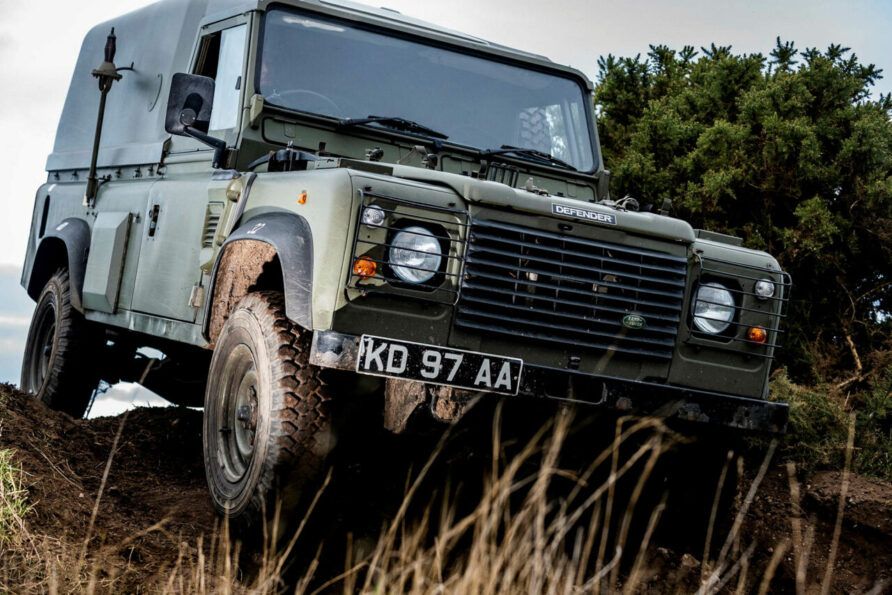
1,000 Pinzgauer (TUM(HD))
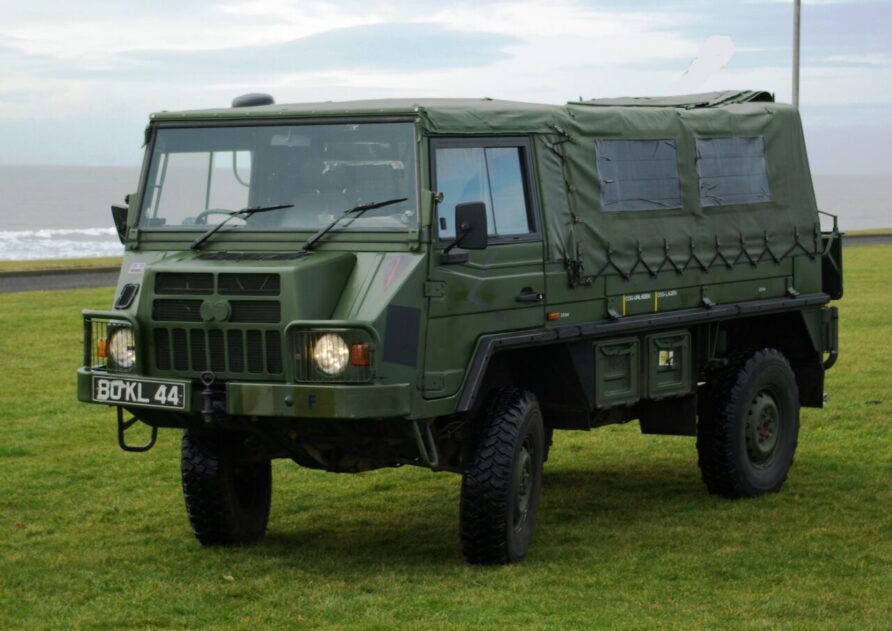
850 Reynold Boughton RB44s (Truck Utility Heavy (TUH))

The programme requirement was split between light and heavy sub-categories, all non-protected, with a payload of up to 4 to 5 tonnes.
- OUVS (Small); with a payload of two to three tonnes
- OUVS (Large); with a payload of four to five tonnes.
This payload bracketing was logical, with the new Support Vehicle then taking over at 6 tonnes and up (that would go on to become the MAN SV vehicles).
Other high-level user requirement included the following;
- Cab areas to accommodate the 95th percentile soldier
- A reduction in the vehicle variants
- Safety and emission specifications to include extra crashworthiness and fewer emissions
- Vehicles to be ‘fitted for’ not ‘with’ physical protection such as armour
- Crew compartment protection is the minimum requirement
- NVG capable with 24/7 capability with an NVG compatible dashboard
- Ability to carry a NATO Standard pallet or ULC weighing a maximum of 1.8 tonnes
- Air portability by C130/A400M
- Given a large amount of sophisticated electronic equipment including BOWMAN radios and IED detectors, the vehicle would be ESM optimised to prevent reduce interference. ECM fits would be GFE by the MoD, but the ability to fit ECM was mandated.
- Good cross-country capability, but this must not compromise road performance
- Bidders could look at powered trailers or the addition of an extra axle to provide extra space and payload without reducing mobility.
- The vehicle should be capable of a Battlefield Mission of up to 96 hours.
OUVS attracted great interest from the defence automotive industry, it was going to be a large vehicle order and the procurement method envisaged several shortlisted vehicles taking part in a FRES like ‘Trials of Truth’.
Early indications in the press seemed to favour Mercedes-Benz with a G-Wagen and Unimog combination.
June 2007
Ann Winterton, Conservative, Congleton
To ask the Secretary of State for Defence
(1) what plans there are to replace each of the variants of Land Rover used by the armed forces; and whether replacements will be part of the Future Rapid Effects System programme;
(2) what consideration has been given to track width of vehicles fulfilling the armed forces Land Rover commitments in the future.
Adam Ingram Minister of State (Armed Forces), Ministry of Defence
It is intended that in future most of the roles currently fulfilled by Land Rover based vehicles will be undertaken by vehicles procured under the Operational Utility Vehicle System (OUVS) programme, which is separate from the FRES programme, or by vehicles such as the Panther command and liaison vehicle. The OUVS requirement will cover a range of vehicle attributes, including wheel base.
By 2007, the programme was still in progress but could not ignore the reality of operations in Iraq and Afghanistan.
Not only did the required quantities increase, but so did protection, requirements now included the ability to be fitted with ECM and appliqué protection.
Some early Land Rover 110s were also refurbished in 2007.
November 2007
Lindsay Hoyle, Labour, Chorley
To ask the Secretary of State for Defence whether Land Rover has been invited to participate in the tender process for the new defence vehicle; how many vehicles are included in the tender; what the size is of the vehicle in the tender; and which companies were included in the tender process.
Bob Ainsworth The Minister of State, Ministry of Defence
holding answer 27 November 2007
It is envisaged that up to 16,000 vehicles could be procured under the Operational Utility Vehicles System (OUVS) programme to replace the in-service light utility vehicle capability currently provided by truck utility light, truck utility medium, truck utility medium (heavy duty) and truck utility heavy. The exact user requirements have yet to be fully defined, but it is expected that a range of vehicles will be required, providing payloads of between one and six tonnes.
OUVS is currently in the concept phase and an invitation to tender has not yet been issued. An expression of interest advertisement was published in both the European Official Journal and the Defence Contract Bulletin in September 2007, which has attracted over 50 responses from industry, including Land Rover.
The Invitation to Tender (ITT) was planned to be issued in 2009 with Main Gate set for 2012, but manufacturers were briefed that OUVS would be an incremental programme over many years.
It was also emphasised that OUVS vehicles would not be used as Protected Patrol Vehicles, even though the initial requirements included some protection elements.
The difference between Patrol and Utility vehicles was clarified in a Parliamentary Answer that explained an earlier joint UK/USA working group.
Mr. Quentin Davies:
Defence Ministers have not had any discussions with the US Administration about the Joint Light Tactical Vehicle programme. Since the establishment of the USA/UK Joint Light Tactical Vehicle (JLTV)/Operational Utility Vehicle System (OUVS) Working Group in July 2008, a number of discussions on participation have taken place by officials. The JLTV capability is a replacement for HUMVEE and performs both a utility vehicle and patrol vehicle role. It, therefore, goes beyond the requirement for OUVS and the two parties have agreed that there is not enough synergy to warrant collaboration on the acquisition of vehicles at this time. The Working Group does, however; continue to share research and development between the two programmes
November 2008
Liam Fox, Shadow Secretary of State for Defence
To ask the Secretary of State for Defence what discussions he has had with the US administration on the potential for UK participation in the Joint Light Tactical Vehicle programme.
Quentin Davies Parliamentary Under-Secretary, Ministry of Defence, Parliamentary Under-Secretary (Ministry of Defence) (Defence Equipment and Support)
Defence Ministers have not had any discussions with the US Administration about the Joint Light Tactical Vehicle programme. Since the establishment of the USA/UK Joint Light Tactical Vehicle (JLTV)/Operational Utility Vehicle System (OUVS) Working Group in July 2008, a number of discussions on participation have taken place by officials.
The JLTV capability is a replacement for HUMVEE and performs both a utility vehicle and patrol vehicle role. It therefore goes beyond the requirement for OUVS and the two parties have agreed that there is not enough synergy to warrant collaboration on the acquisition of vehicles at this time. The Working Group does, however, continue to share research and development between the two programmes.
By 2008, quantities had increased to 16,000 and protection requirements increased.
The US Joint Light Tactical Vehicle (JLTV) and German Armoured Multipurpose Vehicle (AMPV) were of interest to OUVS but were ultimately not considered because of this clear distinction between utility and protected mobility.
For the initial down select, Mercedes proposed an Unimog and G-Wagen combination, and Land Rover entered a 6×6 Defender (a version of that in service with the Australian Army) whilst simultaneously introducing their Extra Heavy-Duty Defender that could accommodate a gross vehicle weight of 4.5 tonnes with a 300amp power system.
Thales proposed the Copperhead variant of the Bushmaster and Iveco, a new version of the LMV/Panther
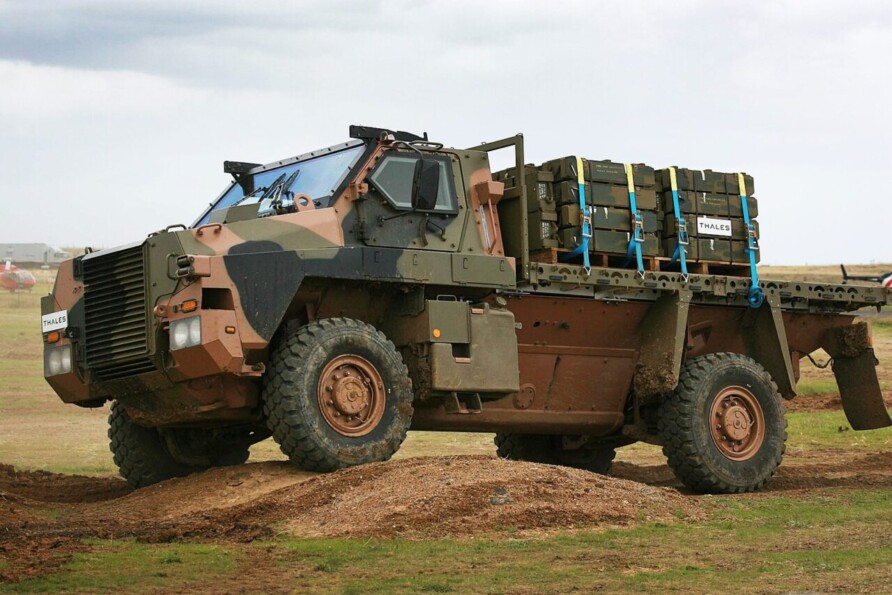
Of the 30 manufacturers that expressed an interest, the shortlisting processes reduced this in 2008/2009 to Babcock, General Dynamics, IVECO, Krauss-Maffei Wegmann, Renault, Lockheed Martin, Mercedes, and Navistar Defense.
Ricardo initially looked to offer a Ford F-350 derived design, and also acquired a licence to build Foers Ibex vehicles
Lockheed Martin with their unusual-looking but reportedly capable Adaptive Vehicle Architecture (AVA) vehicle.
These were targeted at both the medium (4×4) and large (6×6) requirements.
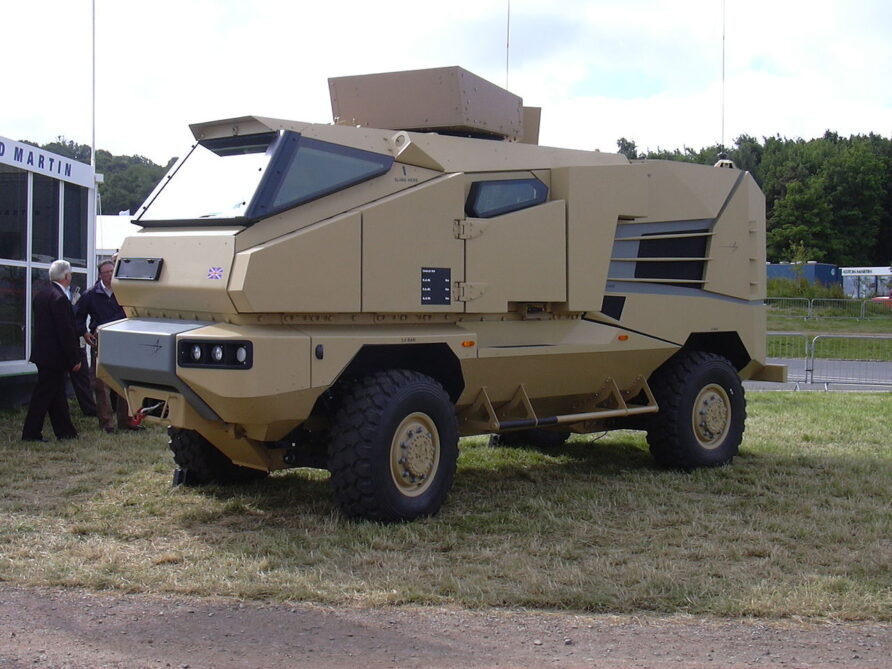
Both vehicles were based on a new chassis with upgraded mechanical components, The configuration was clearly based on the Supacat HMT but was larger and stronger. Plasan provided the cab design, Marshall the load bed, Babcock was involved in some aspects and so were Creation UK, supporting Lockheed Martin.
Renault and Land Rover announced they would partner, the down-selected Renault Sherpa to be assembled at the Land Rover plant in Solihull.
With Land Rover not making the cut, this was an obvious win for both parties, if only to lessen the political impact of selecting a French vehicle over the iconic British Land Rover, tough sell that one.
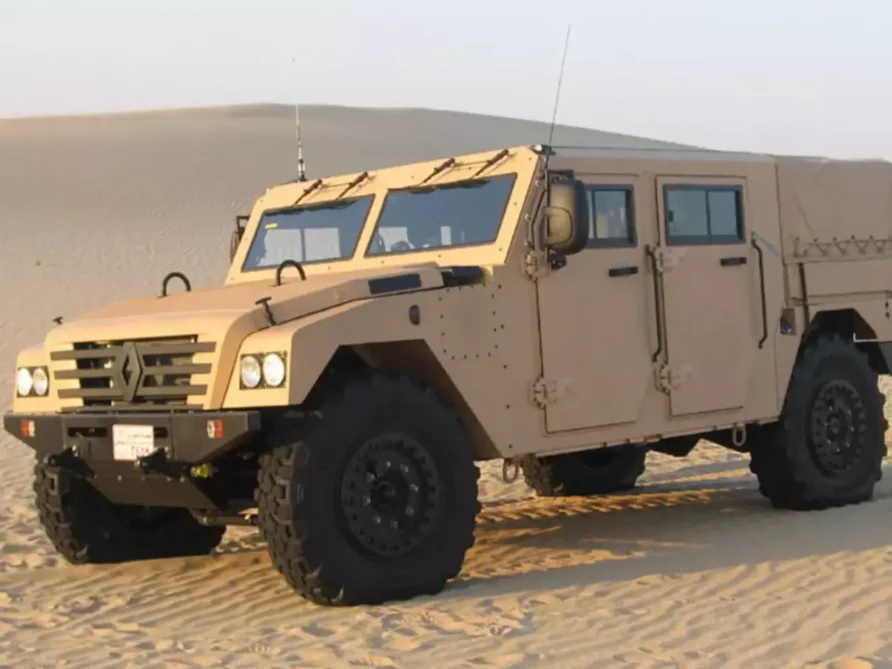
General Dynamics went with an Eagle IV Duro IIIP combination
Navistar, with their MXT for both requirements.

Each one of these vehicles was protected in a way that Pinzgauer, Land Rover and RB44 were not.
The MoD was adamant that OUVS would be non-protected but each down-selected vehicles were just that, something was not quite right with OUVS.
RB44 was withdrawn from service in 2010, leaving the Land Rover and Pinzgauer vehicles remaining, joined by a Mowag Duro for specialised roles.
Before reading on, would you mind if I brought this to your attention?
Think Defence is a hobby, a serious hobby, but a hobby nonetheless.
I want to avoid charging for content, but hosting fees, software subscriptions and other services add up, so to help me keep the show on the road, I ask that you support the site in any way you can. It is hugely appreciated.
Advertising
You might see Google adverts depending on where you are on the site, please click one if it interests you. I know they can be annoying, but they are the one thing that returns the most.
Make a Donation
Donations can be made at a third-party site called Ko_fi.

Think Defence Merch
Everything from a Brimstone sticker to a Bailey Bridge duvet cover, pop over to the Think Defence Merchandise Store at Red Bubble.
Some might be marked as ‘mature content’ because it is a firearm!
Affiliate Links
Amazon and the occasional product link might appear in the content, you know the drill, I get a small cut if you go on to make a purchase
Operational Utility Vehicle System (OUVS) Finish
OUVS was then effectively cancelled with a deferral, there was too much going on in the Middle East and assumptions about minimal protection in OUVS were simply untenable (despite the down-selected vehicles being protected)
The National Audit Office Major Projects Report 2010 described OUVS as…
The requirement for the Operational Utility Vehicle System was reviewed in 2007 by the Army, as lead-user, when the need for vehicles with enhanced protection, capacity, and mobility was identified. The Single Statement of User Need stated that ‘Operational Utility Vehicle System would provide a robust, easily supported system, comprising operational utility vehicles that are able to carry light cargo (up to 6T) or small groups of personnel, integrate as many special-to-role systems as possible and which can operate in diverse climatic and topographical conditions worldwide, in order to support and contribute to land (including land air) and littoral manoeuvre operations’. This capability would be a key supporting enabler for offensive combat operations providing the following roles: unit level logistic cargo vehicle, systems carrier, commanders mobility platform, liaison and personnel mobility platform.
The Operational Utility Vehicle System programme was deferred for two years as part of the Departments 2010 financial planning round. On current assumptions, the competition will re-start in 2012
The cost to the MoD to this point was forecast to be £10 million, with no information on how much the industry had invested.
A 2010 Parliamentary Question addressed the deferral of OUVS.
Nick Harvey Shadow Secretary of State for Defence
To ask the Secretary of State for Defence what assessment he has made of the effect of deferring the Operational Utility Vehicle System programme for two years, and what assessment he has made of the likely trends in (a) production and (b) deployment of small and medium support vehicles during that period
Quentin Davies Parliamentary Under-Secretary, Ministry of Defence, Parliamentary Under-Secretary (Ministry of Defence) (Defence Equipment and Support)
The deferral of the Operational Utility Vehicle System (OUVS) competition will give the MOD the opportunity to consider the latest products from industry, including those from the companies that withdrew from the original OUVS competition. This will allow the MOD to determine the best method of delivering an operational utility vehicle capability for the future. During the period of the two-year deferral, the Tactical Support Vehicles purchased as Urgent Operational Requirements will fulfil the OUVS role in Afghanistan. The Department will conduct a thorough review of the commercial and acquisition strategy for OUVS during 2010. This will consider production and delivery schedules, and the capability requirement informed by our operational experience.
OUVS was removed from the 2011 Planning Round
The Multi Role Vehicle — Protected (MRV-P) emerged in April 2012, and the MoD published a contract note for a pre-concept contract.
Specialist and Logistic Vehicle Project Team (SLV PT) in conjunction with a yet to be selected vehicle trials and demonstration authority will be running a multi-role vehicle – protected (MRV-P) pre-concept study; It is planned to hold the study the week after the defence vehicle demonstration which is being held on 20th & 21.6.2012. Designed to determine the quantity of platforms that conform to the high-level requirement and fall within the desirable Unit Price Cost (UPC) of 250 000 GBP, the study will look at a number of vehicles in the 5 to 15-tonne range that are modular to may be considered as being able to form the base vehicle for and other programmes such as future protected battlefield multi-role ambulance.
The MRV (P) programme is currently at the pre-concept phase and has evolved from the operational utility vehicle system (OUVS), with significant changes in the total numbers and protection level. The vision is for one variant to fulfil all roles, using plug-and-play communications and flexible seating layouts. MRV(P) is not seen as appropriate for providing utility vehicle support to rapidly deployable forces (i.e. first-in, airborne or amphibious), where a lighter, more agile, capability is required. There are currently no KURs or URD for MRV (P)
That was more or less the last time anyone heard of OUVS.
Read more (Affiliate Link)


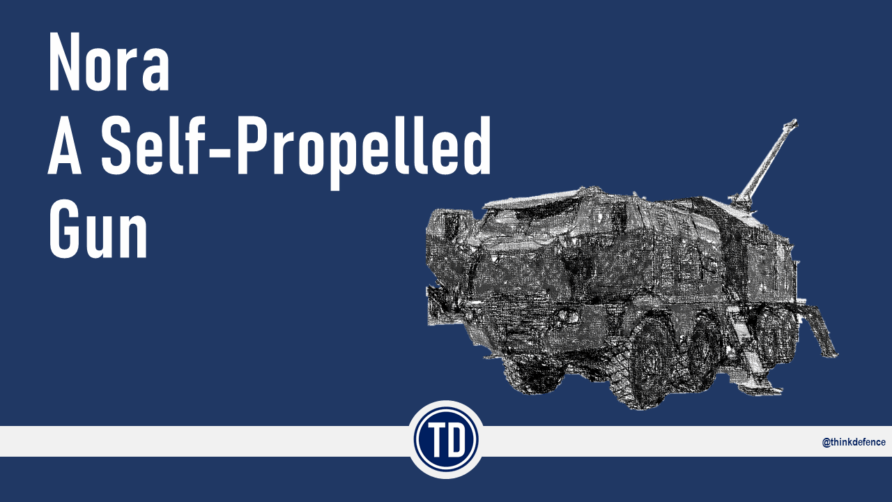
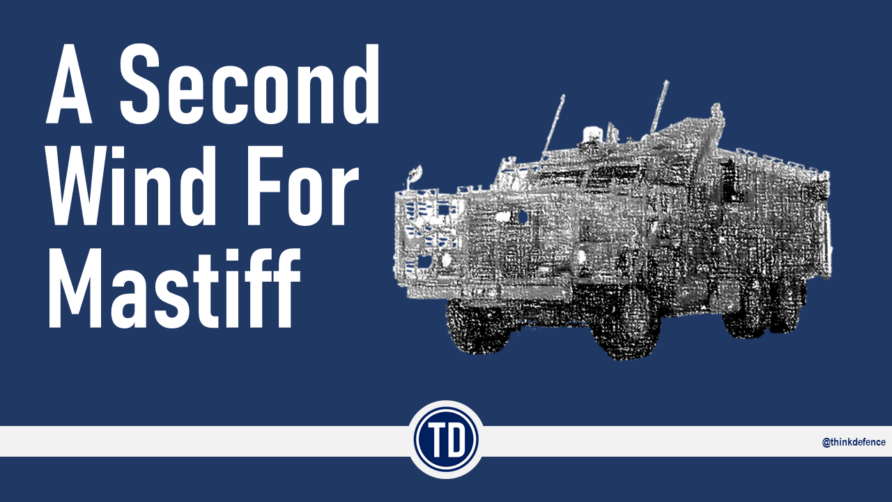
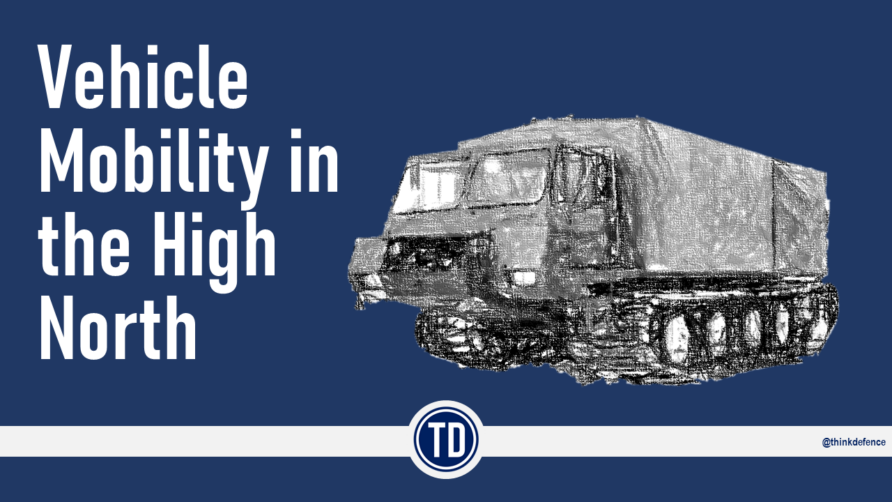
It seems that the army are using Toyotas locally for policing duties. Those 12,000 Land Rovers must wear out sometime